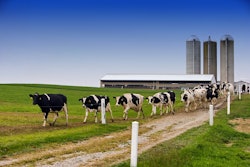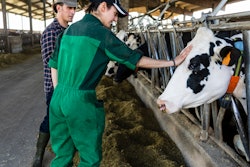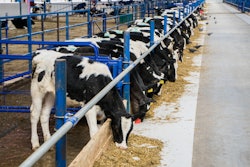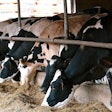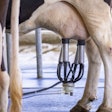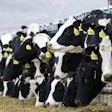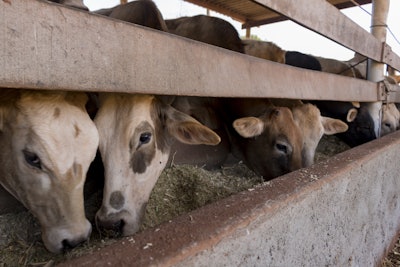
The U.S. Department of Agriculture’s National Veterinary Services Laboratories (NVSL) has confirmed the presence of highly pathogenic avian influenza in a dairy herd in Michigan, the third U.S. state where the virus has been found in dairy cattle.
The Michigan dairy herd had recently received cows from Texas, USDA said on March 29. The USDA said presumptive positive test results have also been received for additional herds in New Mexico, Idaho, Ohio and Texas; USDA will share updates if those tests are confirmed positive by NVSL. However, Idaho's Department of Agriculture on March 28 said HPAI had been detected on a dairy cattle operation in Cassia County. There, it also said the affected facility recently imported cattle from another state that has identified cases of HPAI in cattle. Positive test results have also been received in Kansas.
Federal and state agencies continue to conduct additional testing in swabs from sick animals and in unpasteurized clinical milk samples from sick animals, as well as viral genome sequencing, to assess whether HPAI or another unrelated illness may be underlying any symptoms
The NVSL has also confirmed that the strain of the virus found in Michigan is very similar to the strain confirmed in Texas and Kansas that appears to have been introduced by wild birds (H5N1, Eurasian lineage goose/Guangdong clade 2.3.4.4b). Initial testing has not found changes to the virus that would make it more transmissible to humans. While cases among humans in direct contact with infected animals are possible, this indicates that the current risk to the public remains low.
Spread of symptoms among the Michigan herd also indicates that HPAI transmission between cattle cannot be ruled out; USDA and partners continue to monitor this closely and have advised veterinarians and producers to practice good biosecurity, test animals before necessary movements, minimize animal movements, and isolate sick cattle from the herd. Among the dairies whose herds are exhibiting symptoms, the affected animals have recovered after isolation with little to no associated mortality reported.
USDA said there continues to be no concern about the safety of the commercial milk supply because products are pasteurized before entering the market, or that this circumstance poses a risk to consumer health. Dairies are required to send only milk from healthy animals into processing for human consumption; milk from impacted animals is being diverted or destroyed so that it does not enter the human food supply. In addition, pasteurization has continually proven to inactivate bacteria and viruses, like influenza, in milk.
Pasteurization is required for any milk entering interstate commerce for human consumption. The U.S. Food and Drug Administration’s (FDA) longstanding position is that unpasteurized, raw milk can harbor dangerous microorganisms that can pose serious health risks to consumers, and FDA is reminding consumers of the risks associated with raw milk consumption in light of the HPAI detections.
Because of the limited information available about the transmission of HPAI in raw milk, the FDA recommends that industry does not manufacture or sell raw milk or raw/unpasteurized milk cheese products made with milk from cows showing symptoms of illness, including those infected with avian influenza or exposed to those infected with avian influenza. At this time, the FDA is not aware that any milk or food product from symptomatic cows is entering interstate commerce. Furthermore, if milk from cows showing symptoms of illness, including those infected with avian influenza or exposed to those infected with avian influenza is intended to be used to feed calves, FDA strongly encourages that it be heat treated to kill harmful bacteria or viruses, such as influenza, before calf feeding.
Milk loss resulting from symptomatic cattle to date is too limited to have a major impact on supply and there should be no impact on the price of milk or other dairy products. Further, the U.S. typically has a more than sufficient milk supply in the spring months due to seasonally higher production.
Federal agencies are also working with state and industry partners to encourage farmers and veterinarians to report cattle illnesses quickly so they can monitor potential additional cases and minimize the impact and risk to farmers, farmworkers, consumers and other animals. Producers are urged to work with their veterinarian to report cattle illnesses quickly and practice enhanced biosecurity measures.


